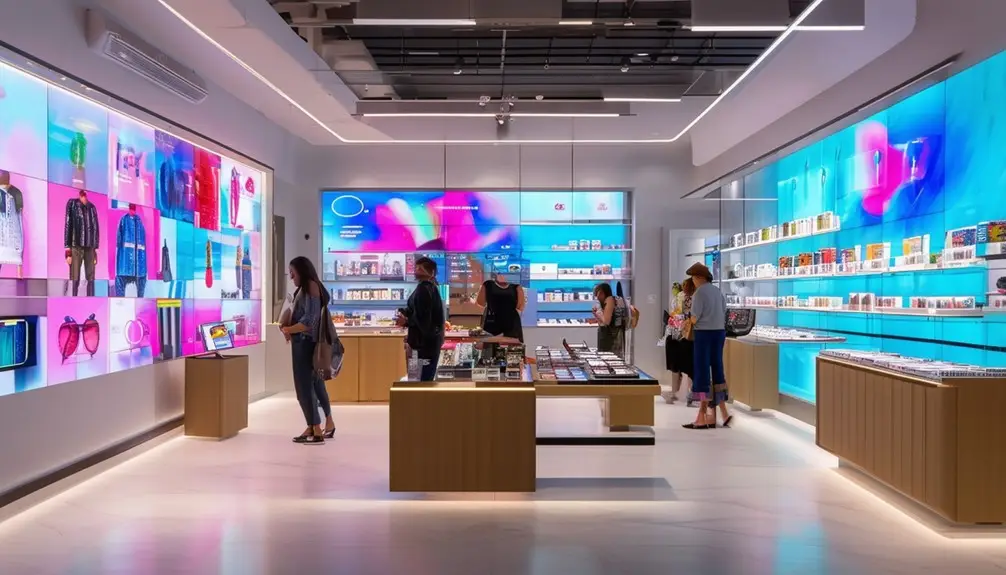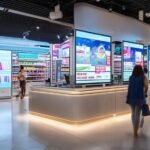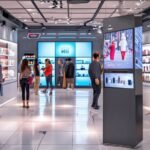You need high-quality interactive screens to elevate your retail environment and engage customers like never before. These screens don’t just enhance sales but also create immersive shopping experiences and collect valuable customer data. Interactive displays can showcase product features, upsell items, and transform the store ambiance, thereby boosting conversion rates. Custom floor displays and DIY kiosks are excellent for increasing customer satisfaction and gathering insights. Real-time data and user interaction analytics allow you to tailor marketing strategies effectively. More insights into implementation strategies await.
Key Takeaways
- Enhance customer engagement with dynamic, immersive content to boost sales and conversion rates.
- Gather valuable customer data and provide actionable insights for tailored marketing strategies.
- Offer self-service options and real-time inventory checks to improve customer satisfaction.
- Showcase product features effectively, facilitating upselling and a more informed shopping experience.
- Utilize attractive designs and user interaction analytics to refine marketing and product placement strategies.
Benefits of Interactive Displays
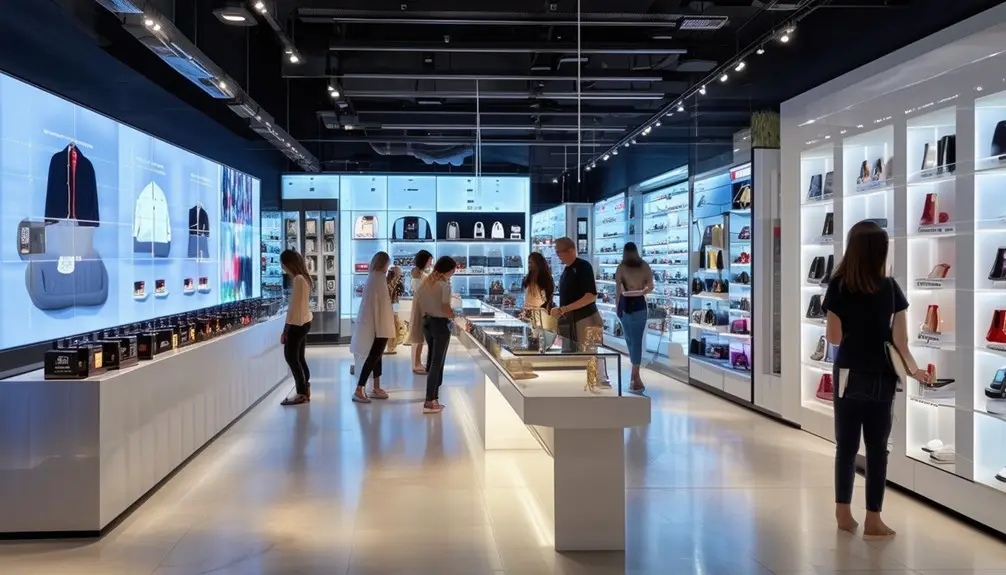
Interactive displays in retail can greatly enhance sales by engaging customers and encouraging them to interact with products. When you incorporate Interactive Retail Displays in your retail spaces, you create an immersive shopping experience that not only captivates but also converts. These displays gather valuable customer data, providing actionable insight into consumer preferences and behaviors. This data can be leveraged to tailor marketing strategies and optimize product placements.
Interactive signage enhances brand visibility and recognition, offering a memorable shopping experience that keeps customers coming back. By integrating digital signage, you can display dynamic content that adapts in real time to customer interactions, increasing engagement. Studies have shown that 87% of retail leaders consider interactivity essential for the success of in-store digital signage, underscoring the effectiveness of this technology.
Interactive displays can greatly increase conversion rates. They provide opportunities for upselling by showcasing complementary products and suggesting additional items that customers might be interested in. This not only increases the average transaction value but also enhances customer satisfaction by providing a more personalized shopping experience. Embracing interactive displays in your retail strategy can lead to substantial improvements in sales performance and customer loyalty.
Defining Interactive Displays
In the world of retail technology, interactive displays are cutting-edge tools designed to engage consumers and drive sales through dynamic, real-time content and user interaction. These digital displays are more than just screens; they are sophisticated platforms that transform the retail environment. By offering visually appealing content, they can improve conversion rates and promote products effectively across various industries, especially for technology and electronics brands.
Interactive displays are ideal for showcasing products in a compelling way, making them one of the best forms of digital signage in the retail sector. They not only attract customers but also educate them, enriching the overall shopping experience. Imagine a customer exploring a new gadget through an interactive screen that highlights its features, benefits, and even how-to videos. This hands-on approach can significantly increase upselling opportunities.
Here’s a quick overview of their key attributes:
| Feature | Benefit |
|---|---|
| Dynamic Content | Engages consumers instantly |
| Educational Tools | Enhances shopping experience |
| Upselling Potential | Showcases product features |
Interactive displays are redefining the standards of retail signage by making the shopping experience more engaging and informative. By leveraging these tools, you can stay ahead in the competitive retail landscape.
Types of Retail Displays
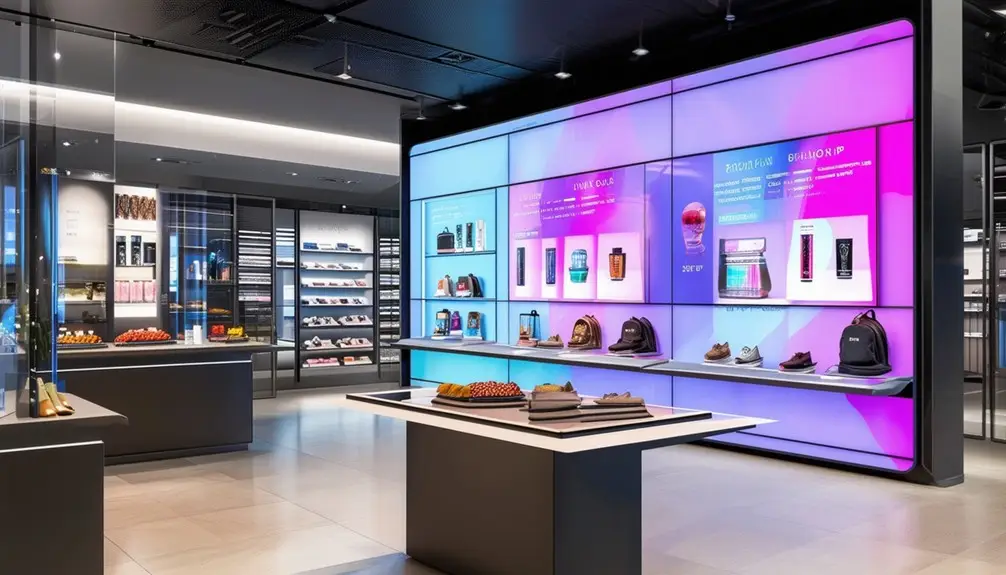
Harnessing the potential of interactive displays, retailers can choose from various types of retail displays, such as custom retail floor displays, retail signage, end caps, pallet displays, and power wings, each designed to enhance customer engagement and drive sales. Interactive display solutions, particularly interactive touchscreens, are ideal for showcasing visually appealing products and are especially popular in the technology and electronics sectors.
In brick-and-mortar stores, these displays not only increase sales but also gather valuable customer data, enhancing your retail business’s overall strategy. For instance, custom retail floor displays can offer personalized experiences, while end caps and power wings strategically placed in high-traffic areas boost visibility and conversion rates. Retail signage with interactive elements can elevate your brand image, making your store a destination rather than just a shopping stop.
Engaging a design agency can guarantee that these interactive display solutions are tailored to meet your specific needs. Smooth deployment and deep user interaction analytics are critical for success, providing insights that refine customer service and upselling strategies. With 87% of retail leaders emphasizing the importance of interactivity, ignoring these tools could mean missing out on substantial growth opportunities.
Shopper Insights and Trends
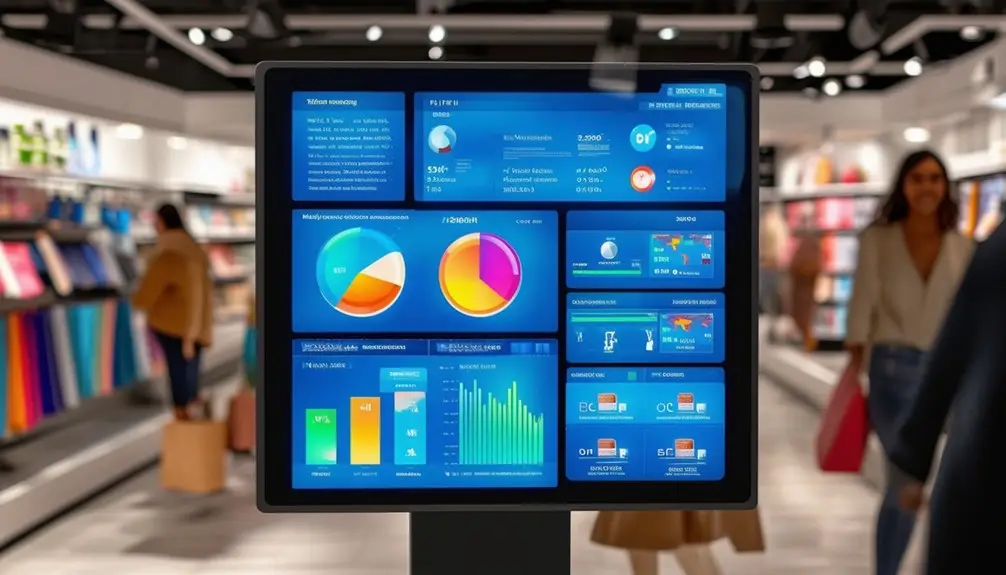
Consistently leveraging shopper insights and trends can significantly enhance the effectiveness of your interactive retail displays. With 87% of retail leaders emphasizing the importance of interactivity in digital signage, understanding shopper preferences is crucial. For example, 66% of shoppers now prefer self-service and self-checkout options, indicating that integrating these features into your displays can greatly improve customer satisfaction and efficiency.
75% of shoppers favor using devices to check inventory and prices. Embedding these functionalities within your interactive screens can streamline the shopping experience, making it more in line with the convenience of online shopping. Store managers should focus on deploying displays that add interactivity through real-time data, various options, and attractive design.
Deep user interaction analytics can provide insights into shopper behavior, helping you refine your product line and marketing strategies. Smooth deployment of these interactive systems guarantees minimal disruption and maximizes effectiveness. To create the Best Interactive experiences, contact us to explore solutions tailored to your retail environment. By staying attuned to these trends, you can not only meet but surpass shopper expectations, fostering a more engaging and efficient shopping experience.
Successful Retail Examples
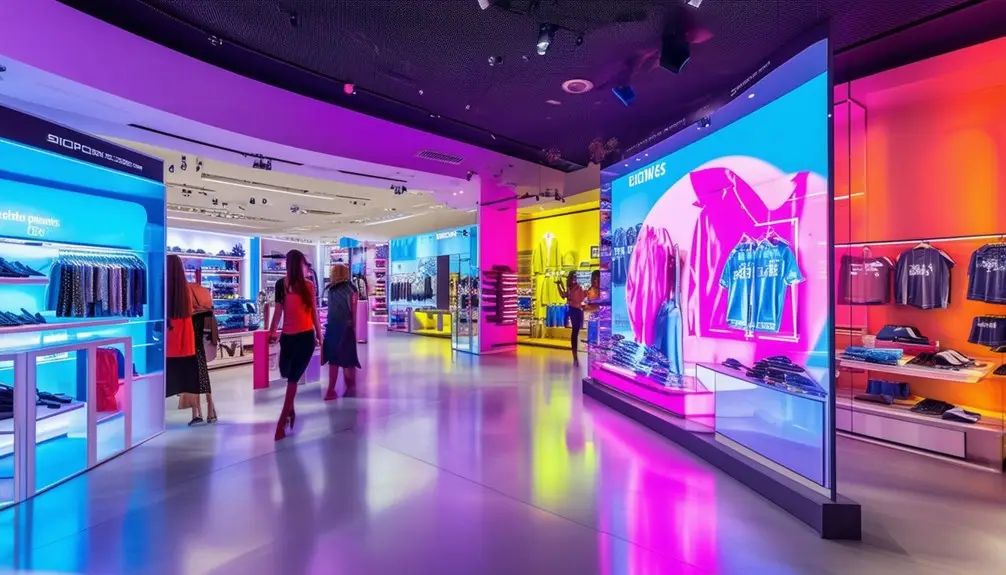
Building on the importance of leveraging shopper insights and trends, successful retail examples highlight how brands have effectively implemented interactive screens to enhance customer engagement and satisfaction. For instance, TUI Group revamped their offline stores with immersive digital content by First Impression, making them a prime choice for customer engagement. These screens offer rich, interactive digital experiences that captivate shoppers.
Telenor’s in-house design team utilized Intuiface to create DIY interactive kiosks, demonstrating the software’s versatility and ease of use. This approach aligns with Us Today’s focus on empowering teams with tools like Cisco Webex and Microsoft Teams, ensuring seamless integration and collaboration.
Waketo’s Digital Touch Table provides an interactive shopping experience that greatly boosts customer satisfaction. Similarly, Prendi’s Digital Configurator simplifies the sales process and supports diverse content display, leading to increased conversion rates. Hunkemöller’s Interactive Social Wall, featuring social media content and a selfie camera, fosters deeper brand interaction.
These examples underscore how prepared any business can be with the right interactive digital solutions, driving both engagement and conversion in a competitive retail landscape.
Conclusion
In the ever-evolving retail landscape, high-quality interactive screens are a game-changer. They cater to modern shopper insights and trends, making your store a cut above the rest. By implementing these displays, you’re not just keeping up with the Joneses; you’re setting the pace. The data speaks for itself: enhanced customer engagement and increased sales. Invest in interactive displays today, and watch your retail space transform into an immersive shopping experience.
Frequently Asked Questions
What Is the Average Lifespan of a High-Quality Interactive Screen?
You’re looking at an average lifespan of 50,000 to 70,000 hours for a high-quality interactive screen. This translates to roughly 5-8 years, depending on usage conditions and maintenance. Regular updates and proper care extend longevity.
How Do Interactive Screens Impact Energy Consumption in Retail Settings?
Interactive screens revolutionize energy consumption, slashing it by up to 50%. You’ll see significant savings due to their efficient power management systems and LED technology, making your retail space both eco-friendly and cost-effective.
Are There Specific Maintenance Requirements for Interactive Displays?
You’ll need to regularly clean the screens, update software, check hardware connections, and monitor for performance issues. It’s important to follow manufacturer guidelines to guarantee peak functionality and longevity of your interactive displays.
Can Interactive Screens Be Customized to Match Store Branding?
Yes, you can customize interactive screens to match your store branding. Utilize custom color schemes, logos, and layouts. Studies show that branded displays enhance customer engagement by 30%, driving higher retention and conversion rates.

